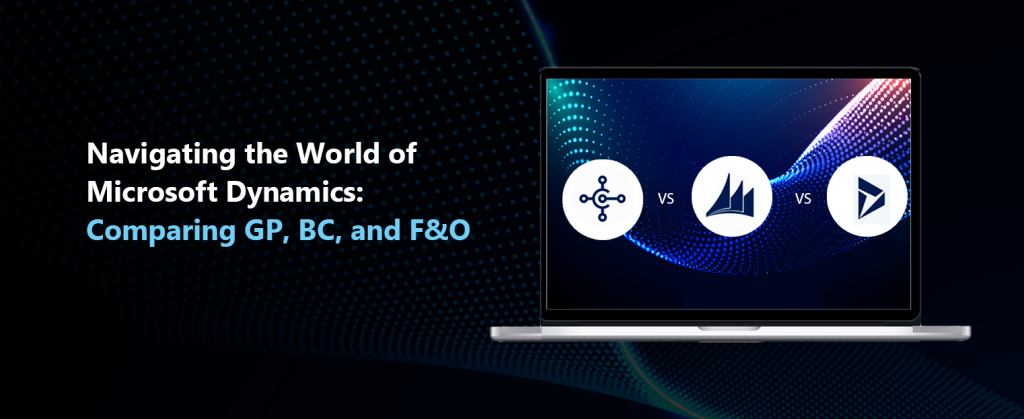Comparing GP, BC, and F&O November 30, 2023

With our previous blogs defining the purpose and benefits of Microsoft Dynamics GP, BC and FO, here are their similarities and differences. Microsoft Dynamics GP (Great Plains), Business Central (BC), and Finance and Operations (F&O) are part of the Microsoft Dynamics 365 suite, but they serve different business needs and have distinct characteristics. Here are some similarities and differences among the three:
Similarities:
Microsoft Dynamics Ecosystem: GP, BC, and F&O are all part of the larger Microsoft Dynamics 365 ecosystem, allowing integration with other Microsoft services and applications.
Cloud Options: While GP traditionally has on-premises deployments, Microsoft has been pushing for cloud adoption. BC and F&O are designed with a cloud-first approach, offering both on-premises and cloud deployment options.
Integration with Office 365: All three solutions seamlessly integrate with Microsoft Office 365, fostering collaboration and communication within the organization.
Scalability: Each solution is designed to scale with the growth of the business, but the degree of scalability varies. GP is typically used by smaller to medium-sized companies, while BC and F&O are more suitable for firms with larger and more complex needs.
Flexibility: Dynamics GP, BC, and F&O offer a degree of flexibility in terms of customization and configuration to meet specific business requirements.
Differences:
Target Audience:
Dynamics GP is primarily designed for small to medium-sized businesses. Geared toward small to medium-sized companies, Dynamics BC can handle a broader range of needs than Dynamics GP. Unlike Dynamics GP and BC, Dynamics F&O has been aimed at large enterprises with complex business processes and global operations.
Scope and Functionality:
Dynamics GP focuses on ERP functions such as financials, supply chain, and human resources but may lack some of the advanced features found in Dynamics BC and Dynamics F&O. Dynamics BC offers a comprehensive set of features covering finance, operations, sales, and customer service. It’s suitable for businesses with a moderate level of complexity. Dynamics F&O provides extensive functionalities, including advanced financial management, supply chain, manufacturing, and more. It is designed for enterprises with complex and global operations.
Deployment Options:
Historically, Dynamics GP is on-premises, but a cloud option exists too. Dynamics BC offers on-premises and cloud deployment options, emphasizing the cloud more strongly. Dynamics F&O is primarily deployed in the cloud, reflecting a cloud-first strategy for large enterprises.
Complexity:
Dynamics GP is well-suited for simpler business processes. In contrast, Dynamics GP handles more complexity than GP but is less robust than F&O. Dynamics F&O is designed for businesses with complex and sophisticated requirements, making it suitable for large enterprises.
Choosing between Dynamics GP, BC, and F&O depends on factors such as the business size, the complexity of processes, deployment preferences, and the need for specific functionalities. Working with a Microsoft Dynamics partner or consultant is advisable to assess your organization’s requirements and determine the most suitable solution.
For details, please visit https://www.karyatech.com/.